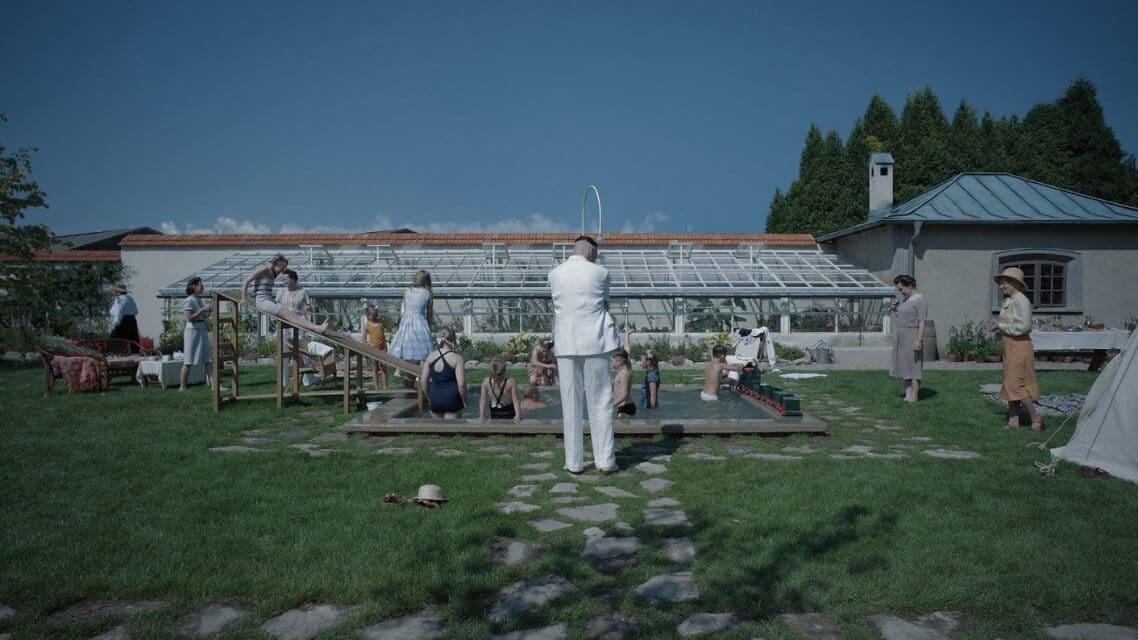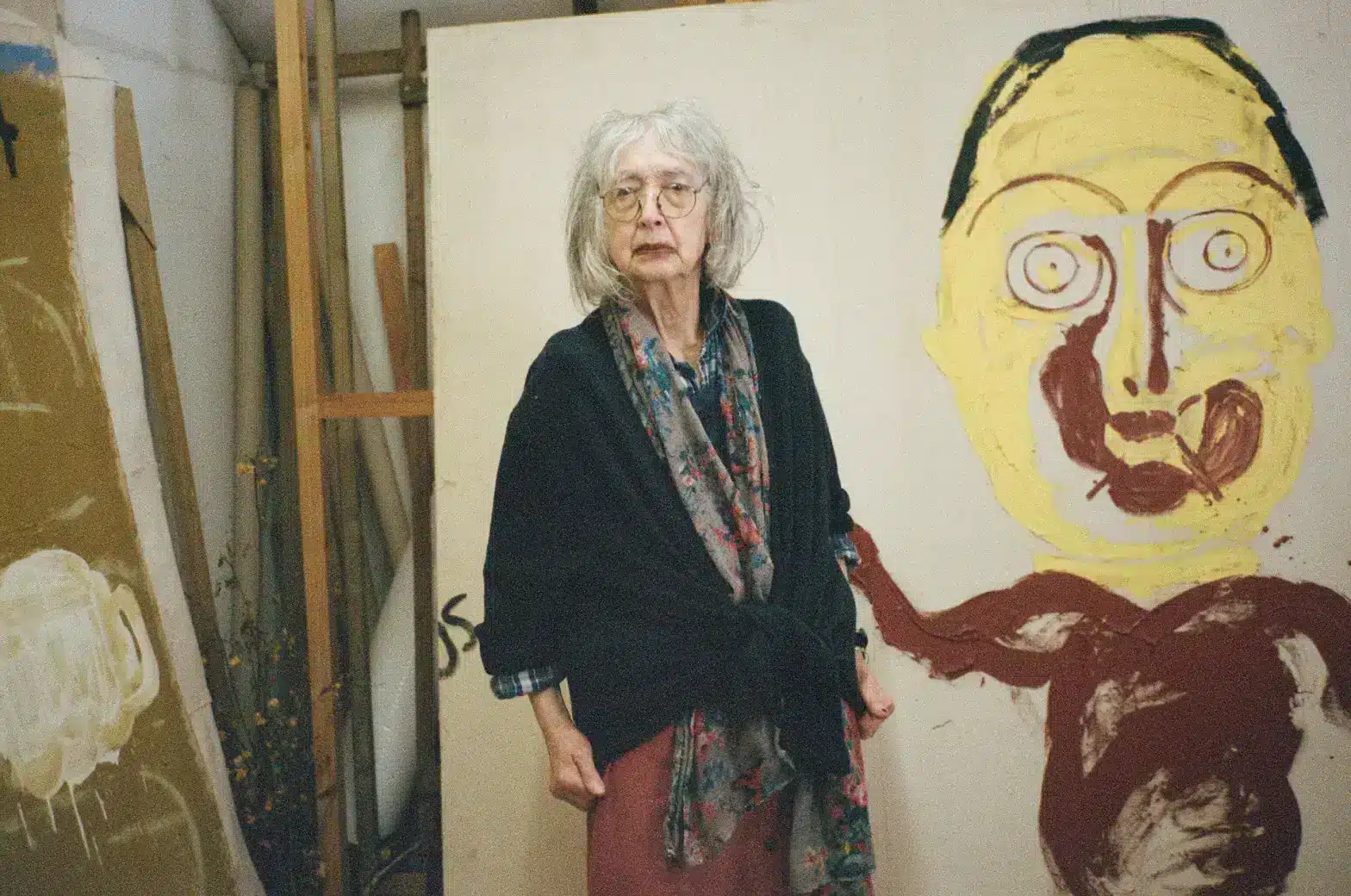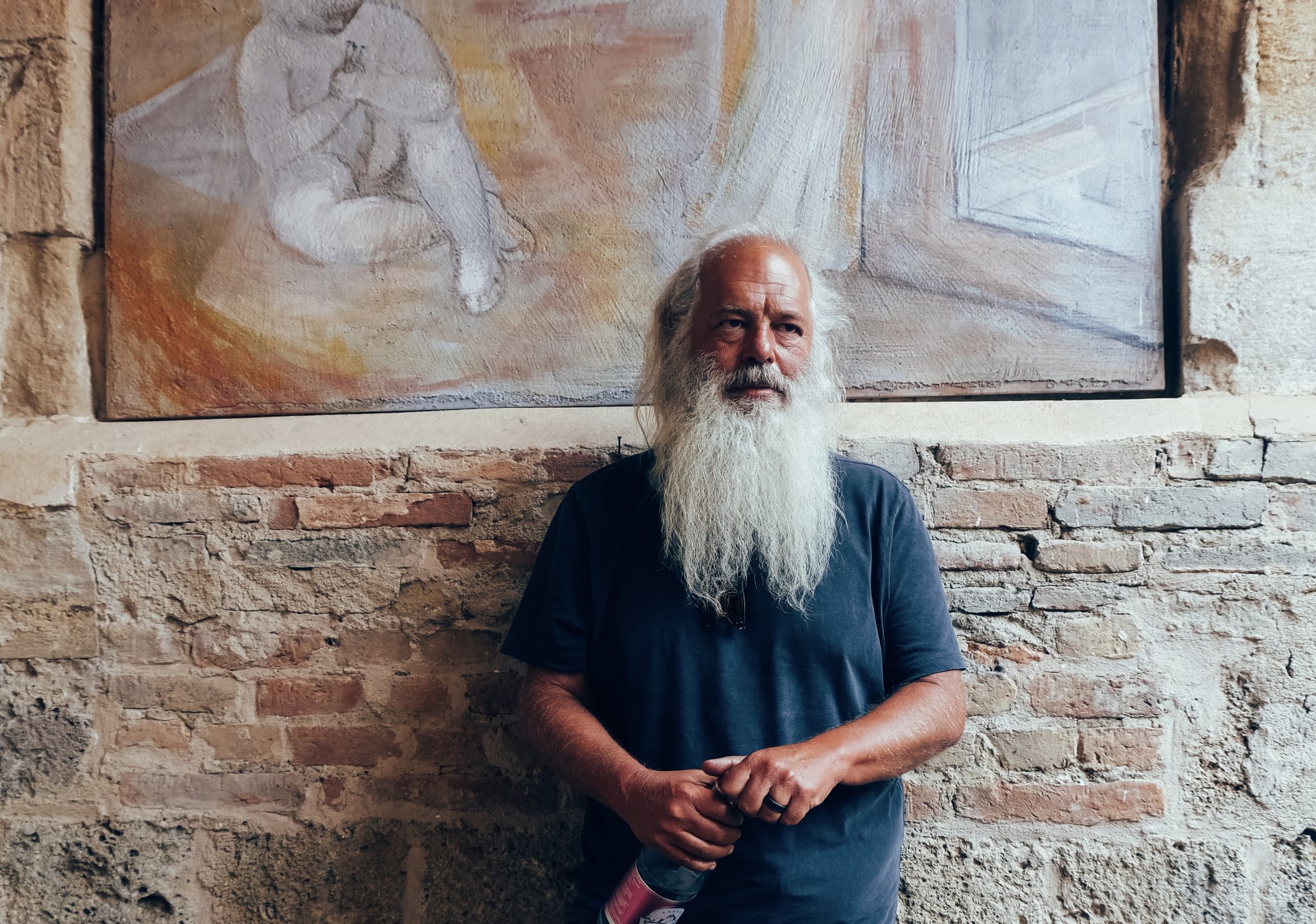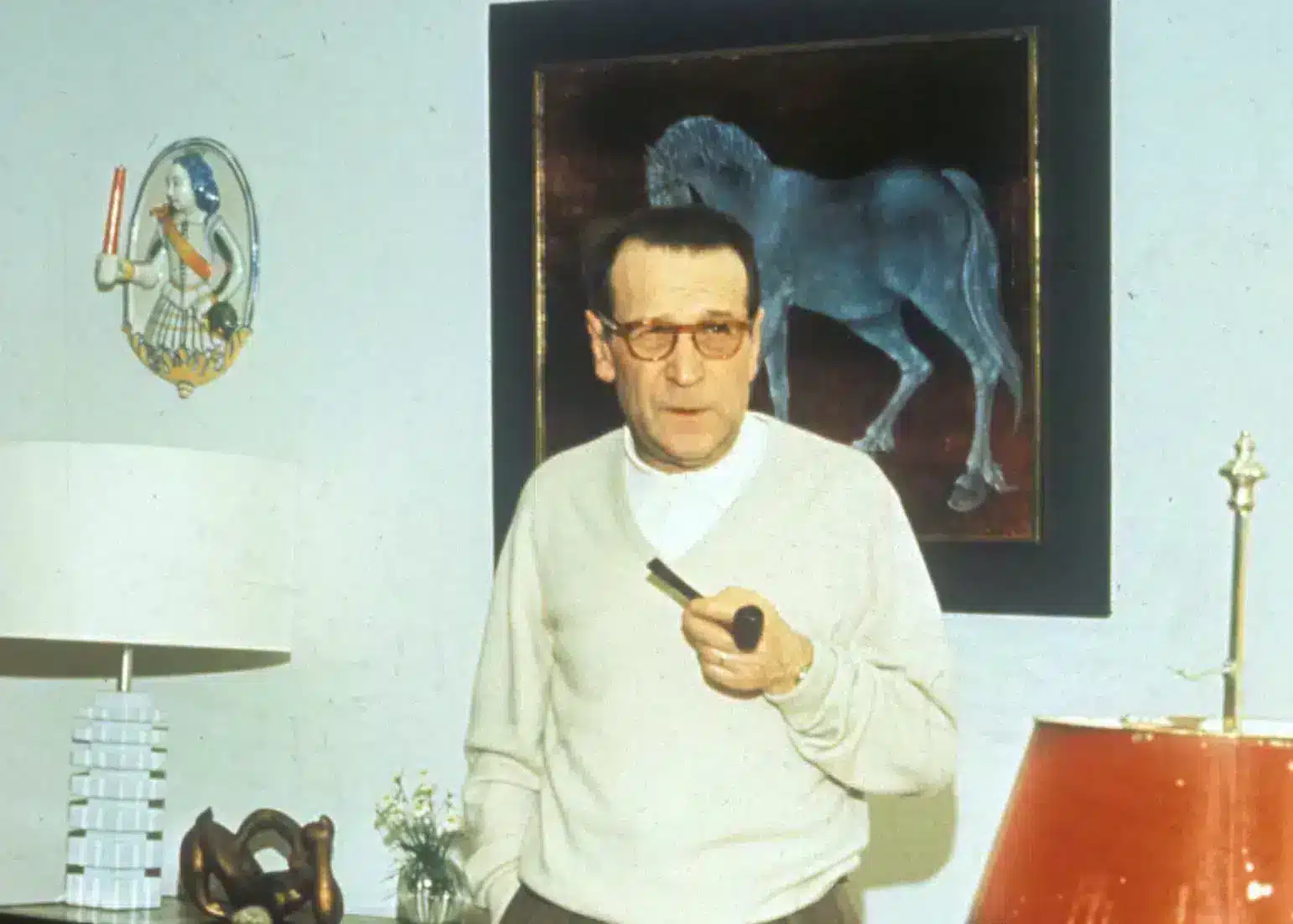
I went to Auschwitz as a teenager. My sixth-form class stayed in Kraków, from where we travelled by coach to the Auschwitz-Birkenau State Museum. It was the beginning of summer, and as we arrived outside the gate of Auschwitz II seen countless times in films, documentaries, and photographs, I realised that I had never before seen it in colour. The sun was shining, I needed my sunglasses. There was a gentle breeze, and the birds were singing. How dare the birds sing at Auschwitz.
Jonathan Glazer’s The Zone of Interest begins with a black screen. Mica Levi’s musique concrète intensifies. Birds start tweeting, followed by a river, wind in trees, children playing, brought in one-by-one like woodwinds atop strings. Then image, colour, people—a family having a picnic, like the Proustian reminiscence of childhood in Ingmar Bergman’s Wild Strawberries. Their white skin and blond hair reflect the sunlight; idyllic, handsome, Aryan.
As my school group walked through Auschwitz, everything felt wrong. People talking, laughing, eating. Taking photographs. Climbing on empty train carriages or posing on the tracks leading into the camp. Touching the ovens in the crematoria. We had a tour guide, but I had to walk around by myself, my head growing hot at the monotone repetition of facts and statistics. Too much life.
Prior to watching The Zone of Interest, I believed it barbaric to make a narrative film about Auschwitz. Michael Haneke’s condemnation of Steven Spielberg’s Schindler’s List puts it best: “The mere idea of trying to draw and create suspense out of the question of whether gas or water is going to come out of the showerhead to me is unspeakable.” Maggie Nelson recalls an incident in The Art of Cruelty in which a high school class in Oakland, California were chastised for laughing at a screening of Schindler’s List during a scene in which a Nazi officer suddenly shoots a woman in the head. One of the students explained that, “We see death and violence in our community all the time. People cannot understand how numb we are toward violence.”
During the first scenes of the screening of The Zone of Interest I attended, I heard the patter of awkward laughter amongst the audience. To my awareness there is no humour in the film, unlike the Martin Amis novel upon which it is based. Like those students laughing at Schindler’s List (I recall students being sent out for doing the same when the film was screened in my Year 9 history class), they had been desensitised into reading ‘serious’ cinema as entertainment. They appeared incapable of distinguishing between Glazer’s mode of filmmaking from that of Taika Waititi.

Waititi’s Jojo Rabbit is barbaric. I use the adjective after Theodor Adorno’s 1949 assertion that writing poetry after Auschwitz is barbaric. It is akin to my sensation that simply being at Auschwitz was wrong—it is as if the world should have stopped. But as Adorno clarified in 1962, “because the world has outlived its own demise, it needs art as its unconscious chronicle.” This is why I specify the immorality of narrative Holocaust cinema rather than documentary—Alain Resnais’s Night and Fog and Claude Lanzmann’s Shoah being as close to “unconscious chronicle” as cinema can get. We need to be constantly looking back to Auschwitz in order to learn how to challenge genocide in the present.
What allows The Zone of Interest to exist is its refusal to depict the atrocities that took place at Auschwitz. It takes place almost exclusively on the other side of the camp wall, daring to get as close as it can without ever showing. As Gillian Rose puts it, Auschwitz has become a synecdoche, “in a way which removes those events even beyond mythic meaning and leaves only dumb witness.” What happened at Auschwitz will always be a greater evil than that which can be conceived by a filmmaker who has not experienced it. Showing it, as Spielberg does in Schindler’s List, will always be a sanitisation of the truth.

In The Origins of Totalitarianism, Hannah Arendt wrote, “Everything that was done in the camps is known to us from the world of perverse, malignant fantasies.” The closest The Zone of Interest comes to this imagining is in the soundscape: a low-angle shot of Rudolf Höss against wisps of black smoke which fades to white; gunshots, cries, children calling for their parents over extreme close-ups of flowers in Höss’s garden subsumed by red. They end abruptly, and we snap back to action. We think too long, we dissociate, and are brought back to Höss’s external haven. It is how we process trauma, how we experience evil in the world while managing to live with it. In this the film makes us complicit with the fascist, with Höss himself.
Critics have characterised The Zone of Interest as a realisation of Arendt’s best-known phrase, “the banality of evil.” But there was nothing banal about Auschwitz to Höss—that was the work of Eichmann, of the architects of the Holocaust who manufactured it in the abstract from conference rooms and villas. What Höss experiences is the habituation of evil, wherein it becomes such a part of daily life and routine that to its perpetrator it is no longer evil but ordinary, even necessary. Evil becomes the air he breathes, the food he eats, the water he drinks.

At the end of the film we follow Höss as he descends a staircase. He retches, and then he looks down a corridor. Cut to the inside of a crematorium at Auschwitz-Birkenau State Museum in the present day as two cleaners enter. A series of long shots follow: one cleans the metal ovens with polish, another wheels a vacuum cleaner past the glass cabinets of shoes, suitcases, spectacles, gold teeth in Block 5 where Nazi guards stored prisoners’ confiscated belongings. The sequence replicates the tour not of the once-in-a-lifetime visitor, but the museum staff for whom this is daily ritual, labour, service. I have cleaned museum cabinets myself, including that of an Egyptian mummy; at first one is fixated on the object, but soon only the cleanliness of the glass.
Around the time that I visited Auschwitz, two British schoolboys were arrested by Polish police when they were caught stealing a comb, spoons, buttons, and pieces of glass from Block 5. One can only speculate what motivated those boys to do this, but it is unlikely they thought that the objects belonged, or rather had belonged, to anyone in particular. When one moves through Block 5, the imagination has to work to bring into being the human lives these objects once adorned.
Cut back to Höss on the staircase, and he continues downwards. The sequence recalls Kerensky’s infinite ascent of the stairs of the Winter Palace in Sergei Eisenstein’s October, each cut restarting his climb like Sisyphus. Glazer has no need for Eisenstein’s satirical intertitles or parodic mechanical peacock. Existing within the medium of film, this image of Höss is now trapped in his descent to Hell, frozen and fixed in that strange mummification of faces and bodies captured by photography and cinema. Höss is as a museum piece, suffocated by SS regalia. As with all depictions of past peoples, he is at once both alive and dead.
The sequence replicates the tour not of the once-in-a-lifetime visitor, but the museum staff for whom this is daily ritual, labour, service. I have cleaned museum cabinets myself, including that of an Egyptian mummy; at first one is fixated on the object, but soon only the cleanliness of the glass.
Lillian Crawford
At the end of Schindler’s List, the survivors accompanied by the actors who portrayed them visit Schindler’s grave in Israel and place stones on its marker. Gillian Rose wrote, “this leaves us at the beginning of the day, in a Fascist security of our own unreflected predation” in what she calls “Holocaust piety”, such that we are aligned with the survivors rather than with the perpetrators. She wishes instead that it left us with “the remains of the day,” leaving us to walk out of the cinema forced to confront our own fascism.
This is what The Zone of Interest achieves. We are not hapless outsiders learning of the Shoah for the first time but fascistic perpetrators attempting to reconcile our complicity. We hear but do not see what happened at Auschwitz in the film; it is our choice to look away just as it is our choice not to act. Our guilt does not concern what we do but what we choose not to do. The guidebook of the Auschwitz-Birkenau museum asks visitors to consider, “What would I have done?” It should be, “What will I do now?”

In his acceptance speech for Best International Feature at the 2024 Academy Awards, Glazer called out the impact of dehumanisation across human history. “Whether the victims of October 7 in Israel or the ongoing attack on Gaza—all of the victims of dehumanisation. How do we resist? Aleksandra Bystroń-Kołodziejczyk, the girl who glows in the film as she did in life, chose to. I dedicate this to her memory and her resistance.”
Bystroń-Kołodziejczyk’s resistance, shown not in colour but in black-and-white nightvision, was to plant fruit for prisoners in the ditches they were forced to dig. But in the film it is also to play on the piano a song she finds hidden in a metal box, the Yiddish song ‘Sunbeams’ by Joseph Wulf. Its lyrics appear in subtitles on the screen: “Souls afire, like the blazing sun, tearing, breaking through their pain, for soon we’ll see that waving flag, the flag of freedom yet to come.” Resistance comes in many forms, including through art, and raising one’s voice even when it is fearful to do so.
On 10 October 1974 Wulf died by suicide. He wrote a letter to his son in which he lamented having written 18 books on Nazism and yet, “the mass murderers walk around free, live in their little houses, and grow flowers.” The grass is lush at Auschwitz. The birds still sing, the flowers continue to grow. The Zone of Interest forces us to acknowledge our complicity in genocide today. It leaves us to reflect on our own desensitisation, the remove from evil we allow ourselves when we look on from afar. And it asks us to contemplate the perennial question: How do I resist?



